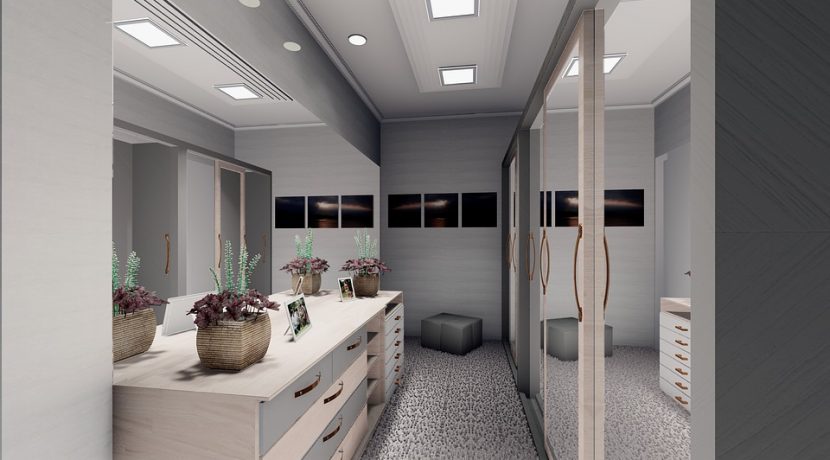Consider the Best Way to Sort Clothing on Hangers
Having a larger closet means that you may have the space for extra hangers, and might be lucky enough to fit all of those items — including next-size-up pieces — on a single rack. Divide current sizes from future sizes by using simple designators that help keep things in their place or use different colored hangers for different sized clothing. You can also help kids keep closets orderly themselves by using rod dividers to designate areas for pants, shirts, dresses, etc.
Keep Shared Closets Orderly With Different Colored Hangers
If two or more siblings share a closet space, use an assortment of colored hangers to differentiate which articles of clothing belongs to what child. It makes it easier for you to keep the clothing in order and makes it easier for them to learn to dress themselves and put clothing away.
Keep “Almost Fits” Items on Deck
For our tween daughter, we keep a small assortment of lesser worn styles and next-size-up basics readily available in her closet so she can easily rotate new items whenever she wants. She can grab these independently, without having to dig through bins in the basement and they don’t take up much space in the closet.
Diligently Organize the Hand-Me-Downs You Receive
Also sorted into bins in the basement is a generous collection of hand-me-down and next-size-up clothing. Sometimes, it’s so big we can’t imagine our children ever fitting into them, so it doesn’t make sense to keep it cluttering their bedroom closets. Cleaned, dried, and folded neatly, we use plastic bins that are clearly labeled with size detail (and the name of the child they’re for) so that it’s easy to size-up wardrobes in the future.
Adopt a System for Out-of-Season Items
Rotating seasonal clothing in and out of the closets is no easy task. For items that we know will be used again next season, we use designated bins to keep things tidy. Sweaters in, summer dresses out! Once the bins are filled, there’s a designated space for the clothing in our basement so that they’re clearly labeled and ready to be used again in six months.
Help Kids Learn How to Organize Drawers
Drawer storage is easily organized with the help of simple, graphic labels. Pete and Marty from Dadand designed the drawer labels shown above (a free printable can be downloaded on their blog). We use ours to help our kids remember what articles belong in each drawer.
Make the Most of Under-the-Bed Storage
If your closet is small or storage space is at a premium, opt for a bed with drawers beneath or make your own storage using shallow bins. Best for this space? Extra shoes (or shoes not actively in rotation), seasonal items, such as sweaters and outdoor wear or bathing suits and shorts.
Have a Dedicated Drop-Zone in the Closet
For younger kids, keeping up with the clothing they outgrow can feel like a full-time gig. The easiest solution? A simple basket stored in the closet so you can immediately ditch any clothing the moment you realize it fits your kid like a slingshot.
Organize Donations and Hand-Me-Downs
Alternatively, you can break down the clothing your baby outgrows by sorting it into a few different baskets. Consider one exclusively for old toys, one dedicated to items that will be donated and a third for items that you’ll hand down to the next child in your rotation.
Learn How to Store Keepsake Items
For the articles of clothing that you intend to keep forever, it’s important to package them with preservation in mind. Wrap clean and dry items in plain, white (not colorful) tissue paper, and store them in a safe place. Breathability is important, and so is keeping these clothes dry. For that reason, cardboard boxes are better than sealed plastic bins but keep in mind that cardboard is more susceptible to being chewed through or getting damp. Storing the box in a low-humidity spot is also important when it comes to preventing dry rot. And if you were looking for a reason to save those tiny silica packets from your purses and backpacks, consider tossing them into the box as well. They’ll help to collect unwanted moisture, and can help ward off mold in the long run.
All rights reserved to the initial publisher for hgtv.com
Collected and published by Arms &McGregor International Realty® editorial team. Get in touch with us at [email protected]

